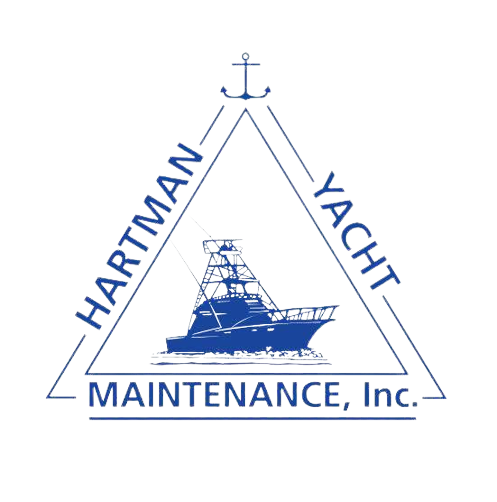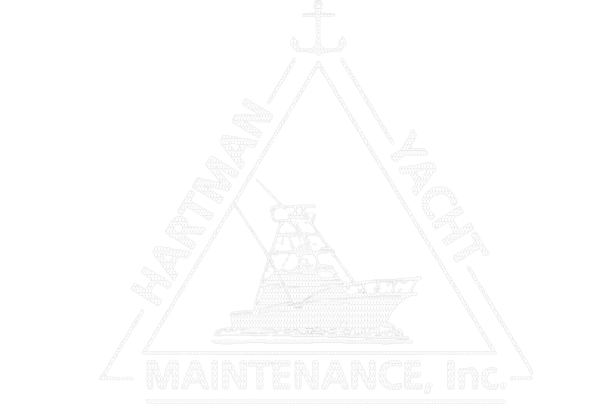Prepping Your Marine Generator for Boating Season
Boating season is right around the corner, and if you're a boat owner, it's time to start thinking about getting your vessel ready for some fun on the water. Whether you're an avid sailor or a casual boater, proper maintenance of your onboard systems is crucial for a smooth and enjoyable experience. At Hartman Yacht Maintenance, we understand the importance of marine generator repair for boats, and we're here to help you ensure maximum performance and longevity of your Fischer Panda water-cooled marine generator.
To assist boat owners and maintenance teams in preparing their units for the season, we've compiled a comprehensive checklist of tasks.
Let's dive in!
1. Remove the Generator Capsule Cover: Start by removing the generator capsule cover to access the internal components.
2. Blow Off Engine Using Compressed Air: Using compressed air, target the backend of the unit and the bottom of the capsule to eliminate any settled material. This step ensures a clean and debris-free environment for your generator.
3. Check the Capsule and Cover Interior with Sound Deadening Foam: Inspect the sound deadening foam inside the capsule and cover. Press down on the foam to check for any liquid build-up. If the foam has absorbed fluids, identify the type of fluid and inspect the corresponding system for leaks. Note that if the foam or engine isolation mounts have come into contact with diesel fuel or engine oil, they must be replaced after rectifying the issue to prevent degradation.
4. Inspect Hoses and Hose Clamps: Check all hoses for any signs of damage, such as cracks or visible wear. Ensure that the hose clamps are tightened appropriately and free from oxidation or damage. If any hose clamp shows signs of material breakdown, replace it immediately to avoid complications within the capsule.
5. Verify Wiring and Wiring Harnesses: Confirm the integrity of all hard wiring and check that connectors are properly seated with no signs of damage or breakdown.
6. Assess Engine Belt, Belt Tension, and Pulleys: Carefully inspect the condition of the engine belt, looking out for any cracking or fraying. Check the belt tension by measuring the deflection, which should be approximately 10mm at the middle of the longest span. Adjust the tension as needed using the tensioning pulley.
7. Bar the Crank Over: Use a socket on the nut in the center of the crank pulley to turn the crankshaft a few revolutions. This action helps to free up the crankshaft and ensures smooth function.
8. Check the Raw Water-Cooling System: Inspect the raw water-cooling system from the entry point of the thru hole to the genset. Ensure that all plumbing is clear of debris, seaweed, or any other obstructions. Check the status of the pump impeller and seals. If your unit has an automatic raw water valve, confirm its operational status.
9. Evaluate the Fresh Water-Cooling System: Verify that the coolant is bled solid throughout the system, and check the quality and condition of the coolant to ensure it is run-ready.
10. Ensure Generator Battery Functionality: Check that all terminals are tightly secured, clean, and making good contact. Test the battery voltage and capacity under load, referencing our previous blog entry on battery voltage versus battery capacity.
11. Inspect Control Systems Fuses: Pull and reseat all fuses to ensure their proper functioning. Verify that all control relays are securely seated into their holders.
12. Evaluate Fuel and Fuel Delivery System: Thoroughly inspect the condition and quality of the generator's fuel and fuel delivery system. Ensure that the system is bled solid up to the injectors and that no air is present.
13. Check Sensor Data: Utilize the control panel to check the sensor data and confirm that all sensors are reporting accurate values. Keep in mind that the winding temperature may not be reported until it exceeds 105°F. Ensure that the control panel is not indicating any alarms.
14. Perform First Start and Run Cycle: When starting the unit for the first time, make sure the generator cover is removed for a visual inspection of the machine's performance. Pay attention to any raw water pump leaks, unusual vibrations, rattling noises, or inconsistent idling. After a few minutes, verify the output values on the panel readout. If everything is functioning correctly, your Fischer Panda generator should be ready to go for the season.
Need assistance? Do not hesitate, we are here to help!
Installing a generator on a boat can significantly enhance your boating experience, providing you with the power you need for various onboard systems. However, regular maintenance is crucial to keep your generator running smoothly and efficiently. By following these steps and conducting routine checks, you can ensure that your marine generator performs optimally and stands the test of time.
If you need any assistance with mobile boat repair or outboard maintenance, don't hesitate to reach out to Hartman Yacht Maintenance. Our experienced team is here to help you with all your boating needs. Enjoy a fantastic boating season ahead by calling one of our offices.


